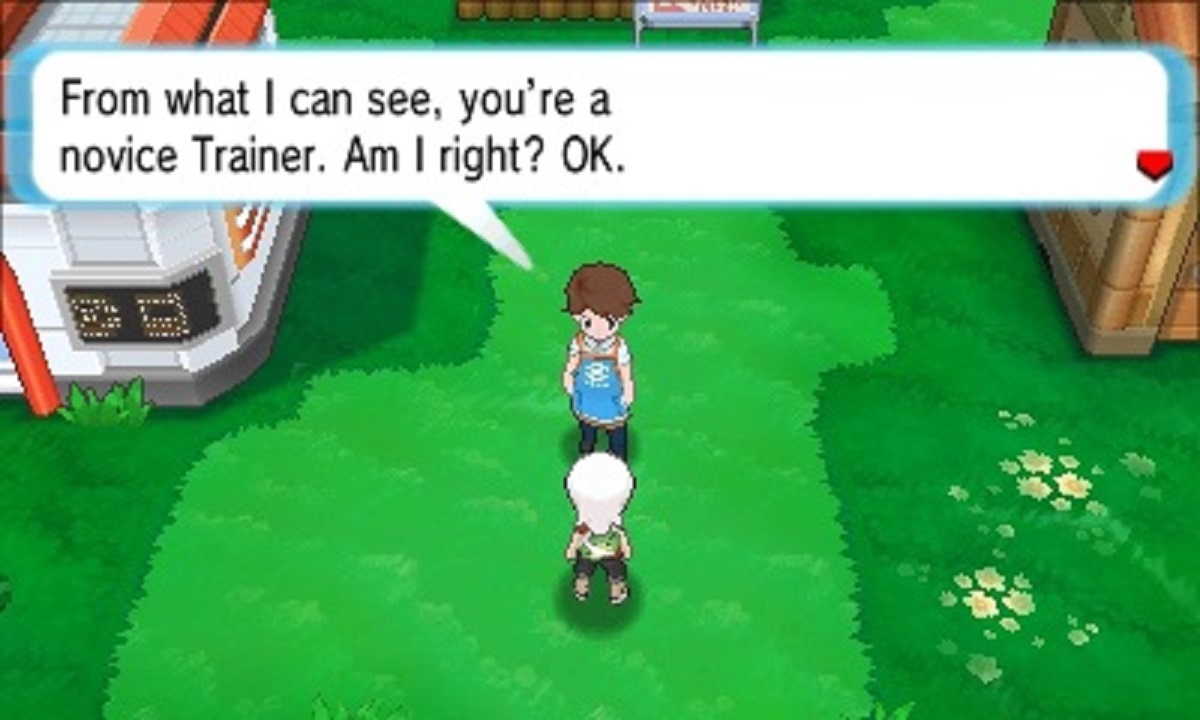

Recent changes to Guild Wars 2 have brought about strong emotions. When seasoned MMO players hear that the build system in their favorite game is being changed during an update, the majority expect the worst possible outcome; their favored class or profession will no longer be viable, their gear will be obsolete, and all of the time, effort, and expense they have put into their character over the time they have played it will become, in one fell swoop, time wasted. This is an understandable fear, given the fact that unpopular changes are not exactly an uncommon occurrence in the genre as a whole; something akin to the infamous NGE, or New Game Experience, in Star Wars: Galaxies springs to my mind immediately. Players, as a whole, have been conditioned to be somewhat apprehensive when Big Changes loom on the horizon.
It is only natural, then, that the players of Guild Wars 2 anticipated some disappointment with the changes that came to the game on June 23rd. By extension, then, it is also only natural that I, being a Guild Wars 2 player, and having the same pessimistic outlook when it comes to character build changes in an MMO, braced for the worst when I logged in after updating my client to the new build last Tuesday evening, worried that I would have to relearn everything about my little D/D Elementalist.
It brings me great satisfaction to report that my fears were unfounded. It must be stated that I am quite new to Guild Wars 2, having been playing the game for a mere two months, so I am somewhat freer of the expectations and experiences which would naturally shape the opinion of a more experienced player. However, I had grown comfortable with the quirks of playing a D/D Elementalist, at least in PVE content, and had become quite familiar with the existing trait system, rotation, and tactics. I was worried I’d have to relearn the class. I didn’t.
The changes to the way a build is constructed merit mention. The old trait system, where the player selected traits as they saw fit from any of five categories – Fire, Air, Earth, Water, and Arcana – has been replaced by the specialization system, where players select any three of the above five categories to construct their build around. Each specialization – once again, named Fire, Air, Earth, Water, and Arcana – grants up to 6 skills which enhance attributes, provide extra boons or conditions when using certain weapon or slot skills, and so on. In each specialization, three of these skills will be fixed and three will be ones which the player selects from a trio of options.

These skills will not be accessible until the player unlocks them, so lower level characters will, of course, not have access to all of the customization options which will eventually be available to them. New skills are unlocked by spending Hero Points, which have replaced the older Skill Points, and which are gained simply by leveling their character, though extras may still be gained from completing Hero Challenges – formerly known as Skill challenges – in-game. The player is no longer required to complete certain tasks to unlock a given trait, or to pay a substantial amount of skill points and gold to purchase them from a profession trainer. All they need do is play the game, however they like; I really, really like this change. Earlier, upon reaching level 80 on both my Elementalist and my Thief, I had not yet unlocked enough traits to select the seven we were able to select; while this is reflective of both my playstyle and the earlier incarnation of the build system, the fact that everything can now be unlocked by simply levelling your character is great. Incidentally, these Hero Points will also be spent to unlock slot skills, which were formerly were purchased with skill points.
I would be remiss if I did not take a moment here to explain the repeated and varied usage of the word “skill” in this article. While formerly these unlockable customization options were known as “traits”, they are now called skills; this is a bit confusing, as now we have a trio of things called “skills” which impact our characters. To that end, I will call weapon skills and slot skills by their full name, and the skills which the character purchases at the Training panel of their Hero sheet are what I refer to when I use the simple word “skills”. If I have a nagging complaint about the new system, it is exactly this; there are so many things known by the name “skill” that it can become a bit confusing when talking or reading about the topic.

A bit of elementary math reveals that three specializations, each providing the benefits of up to six different skills, provides the player with a total of eighteen specialization skills which will impact their character and, by extension, their playstyle; compared to the seven which were available at any given time under the Trait system, this is a pretty substantial change. However, three of the six in each specialization are fixed, so a player is only able to actually “choose” nine of them, and the remaining choices are restricted to selecting from three options for every slot, mirroring somewhat the earlier division of traits into the three levels of Adept, Master, and Grandmaster.
Elementalists in general, and D/D Elementalists in particular, have always been versatile, able to switch between a total of twenty weapon skills by simply changing attunement. The quicker they can cycle through attunements, or return to one they just left when they need it, the more survivable they are. The attunement timer – which is how long one must wait before switching back to an attunement which they have just switched from – has been reduced to ten seconds, from the thirteen that it was pre-update. The global cooldown has been reduced from 1.65 seconds to 1.5 seconds; this is how long the Elementalist must wait when they switch attunements before they can switch yet again, to a third attunement. In addition, the third fixed skill granted by the Arcana specialization reduces all recharge timers by 15%, so the attunement timer is about 8 seconds, and the global timer is about 1.2 seconds, when this specialization is active. The impact of all of this is that the Elementalist will be able to switch back and forth between attunements faster than before, and thus, be able to deal with varied and changing situations a little quicker than before. Of course, being able to burn through attunements more quickly than before does not mean that the individual weapon skills recharge any faster than they did before – they do not – so some rotation changes will have to be made for certain types of Elementalist.

Other changes have been made which impact Elementalists as well, and these go hand in hand with being able to burn through abilities more quickly than before. More emphasis has been placed on the condition damage stat itself, with regard to how condition damage is applied and calculated; in a nutshell, the condition damage stat – and damaging conditions by extension – are more potent than they were before. This, coupled with the fact that every Elementalist weapon skill which applies burning has had its duration lengthened, may open new avenues for players to explore gearing for some condition damage, and for more Elementalists to rely on damaging conditions as a serious tactic. Certainly regeneration and protection are potent, but so are burning and bleeding, and I like having the best of both worlds whenever possible. The changes have allowed me to select Strength of Stone as my second earth specialization skill, which adds 10% of Toughness to Condition Damage; this skill increases my burning and bleeding damage by about three percent; hardly game-changing, but noteworthy. The extra time which must be filled in Elementalist’s rotations, due to faster attunement swapping, might be nicely filled by a burn or bleed, and now, those attacks will hurt more.
Unusually, but notably, a number of slot skills have been made into Cantrips which were not classified as Cantrips before; while this was almost certainly done so there would be enough Cantrips to enable the inclusion of a Cantrip category on the training sheet, it does have the effect that there are now a greater number of slot skills which can trigger effects like Soothing Disruption, and which benefit from abilities which impact Cantrips. The healing skill Ether Renewal, and the Elite skills Tornado and Whirlpool, are now classified as Cantrips; while this will probably not get me to select Tornado over FGS, it does add the nice benefit that the only Elite skill available to Elementalists underwater can now trigger regeneration and has a 20% reduced recharge, if the player happens to select Soothing Disruption; once again, not game-breaking, but nice.
The impact of all of this is that it now feels as though the Elementalist in general, and the Dagger/Dagger Elementalist in particular, has a few more options available to it regarding viable builds, and the class, overall, simply feels a bit more versatile than before. In the trait system, D/D Elementalists relied on condition removal and regeneration, protection and boons triggered by dodging, and these abilities were granted by choosing a select few traits from the Water, Earth, and Arcana categories. Very few people deviated from this build, and with good reason; it worked. A similar philosophy surrounded the other types of Elementalist as well, with Staff, Scepter/Dagger, and Dagger/Focus Elementalists all gravitating toward a single sort of build. I am no expert, and I will leave the discussions of what is “best” to those more experienced and intelligent than myself. However, more options for players are now available, and that is always good for a game. These changes were well done, well implemented, and ArenaNet has actually managed to simplify the build system while adding versatility, they have given us reasons to consider new options, and they have done all of it without making me change my playstyle one bit. Overall, pretty awesome work, I’d say.




 Warlords of Draenor: Can it revitalize World of Warcraft? .
Warlords of Draenor: Can it revitalize World of Warcraft? . Metal Gear Solid V: The Phantom Pain Guide: How To Get All Key Items, Outfits And Certificates
Metal Gear Solid V: The Phantom Pain Guide: How To Get All Key Items, Outfits And Certificates How To Make Your Games Run Faster And Smoother (Windows) .
How To Make Your Games Run Faster And Smoother (Windows) . Pokemon ORAS Tip: How to get easy money
Pokemon ORAS Tip: How to get easy money Interview with Nathan Richardson, Senior Producer for Warhammer 40,000 Eternal Crusade .
Interview with Nathan Richardson, Senior Producer for Warhammer 40,000 Eternal Crusade .